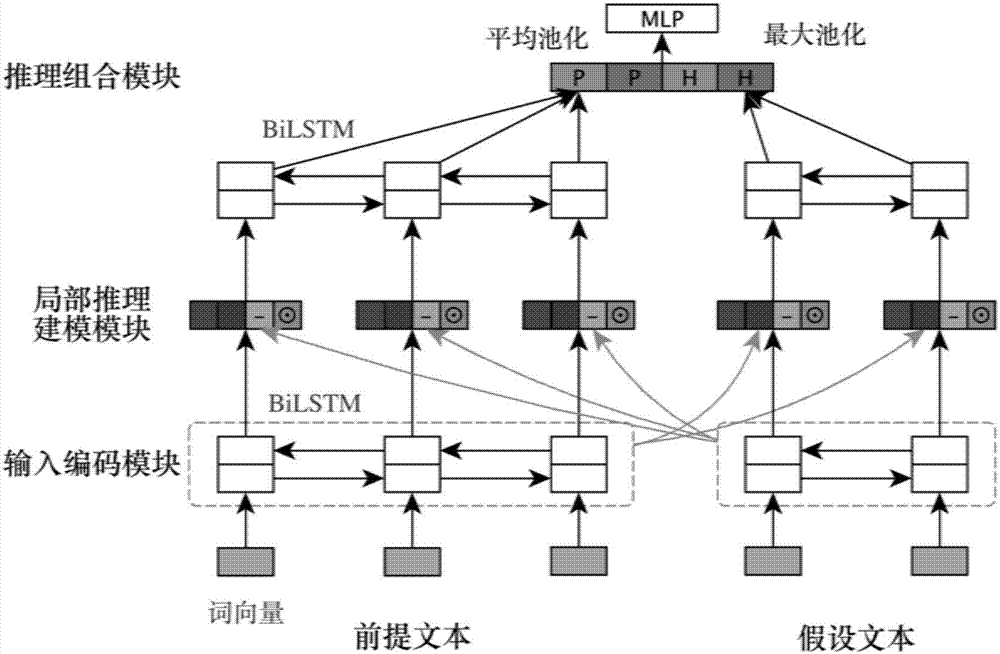Neural network natural language inference method combining single word semantic knowledge
A neural network and natural language technology, applied in the field of natural language processing, can solve problems such as limited robustness and scalability, and achieve strong scalability, good accuracy, and reduced sensitivity
- Summary
- Abstract
- Description
- Claims
- Application Information
AI Technical Summary
Problems solved by technology
Method used
Image
Examples
Embodiment Construction
[0041] The technical solutions in the embodiments of the present invention will be clearly and completely described below in conjunction with the accompanying drawings in the embodiments of the present invention. Obviously, the described embodiments are only some of the embodiments of the present invention, not all of them. Based on the embodiments of the present invention, all other embodiments obtained by persons of ordinary skill in the art without making creative efforts belong to the protection scope of the present invention.
[0042] figure 1 It is a flow chart of a neural network natural language inference method incorporating word semantic knowledge provided by an embodiment of the present invention. Such as figure 1 As shown, it mainly includes the following steps:
[0043] Step 1. Extract various semantic relations between word pairs from the external semantic knowledge base.
[0044] In the embodiment of the present invention, the various semantic relationships b...
PUM
 Login to View More
Login to View More Abstract
Description
Claims
Application Information
 Login to View More
Login to View More - R&D
- Intellectual Property
- Life Sciences
- Materials
- Tech Scout
- Unparalleled Data Quality
- Higher Quality Content
- 60% Fewer Hallucinations
Browse by: Latest US Patents, China's latest patents, Technical Efficacy Thesaurus, Application Domain, Technology Topic, Popular Technical Reports.
© 2025 PatSnap. All rights reserved.Legal|Privacy policy|Modern Slavery Act Transparency Statement|Sitemap|About US| Contact US: help@patsnap.com



